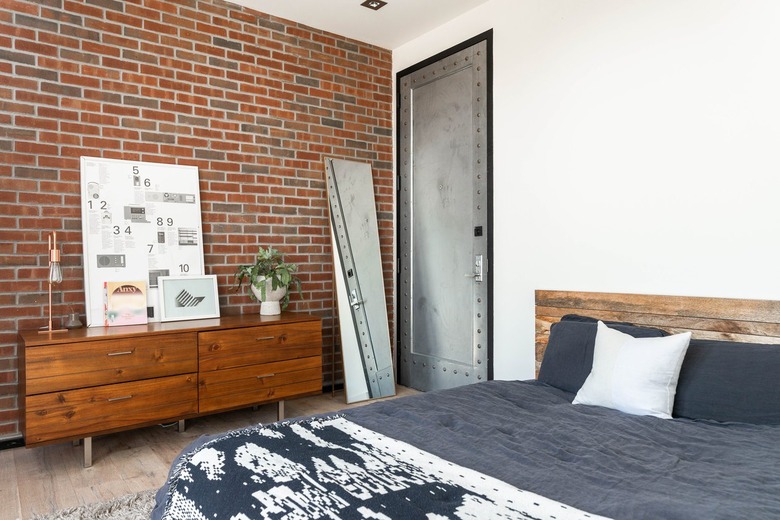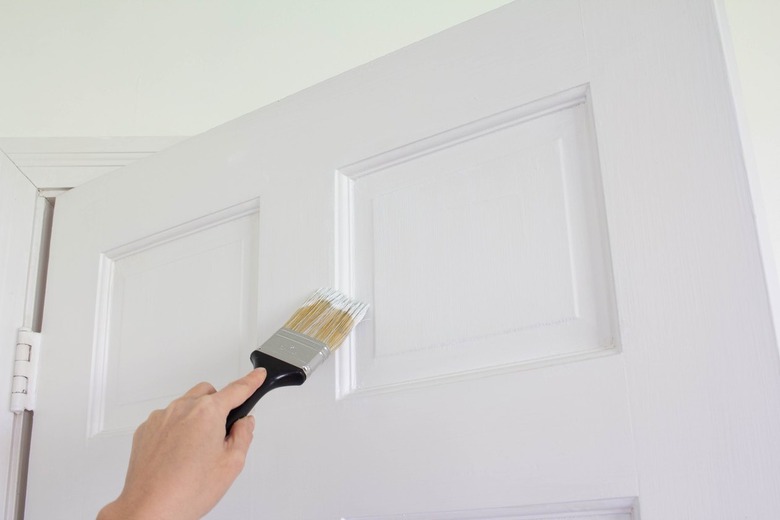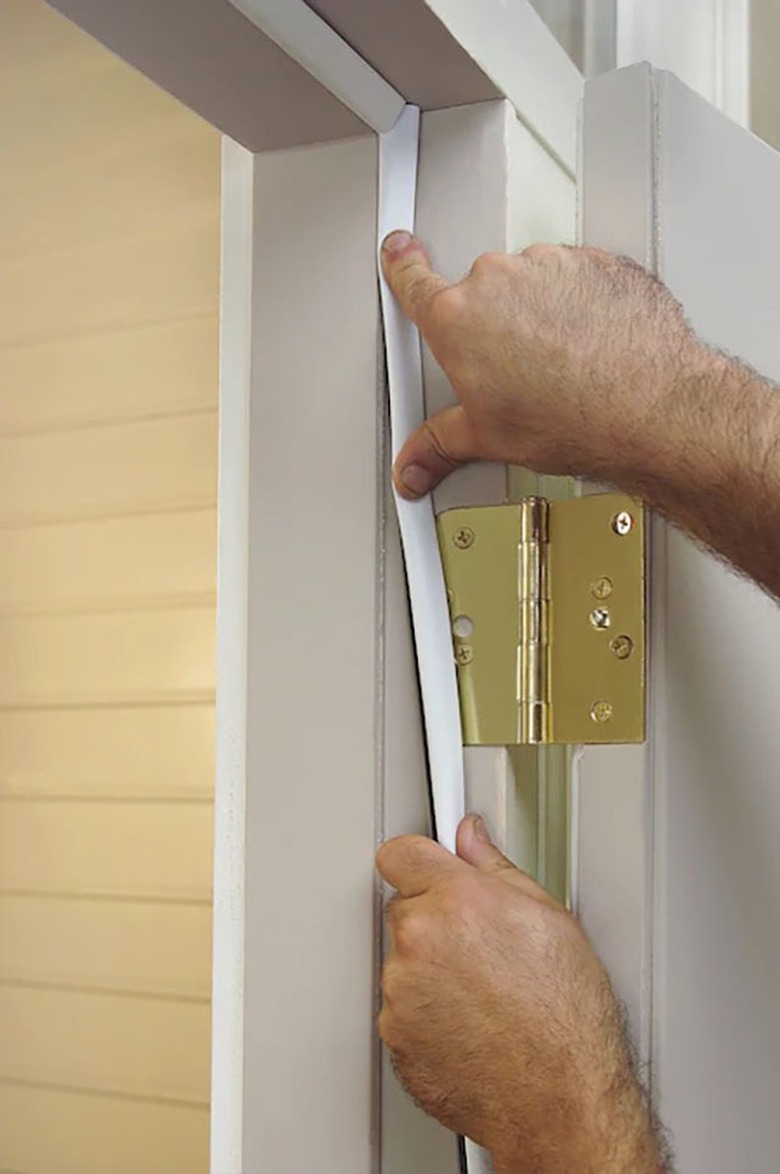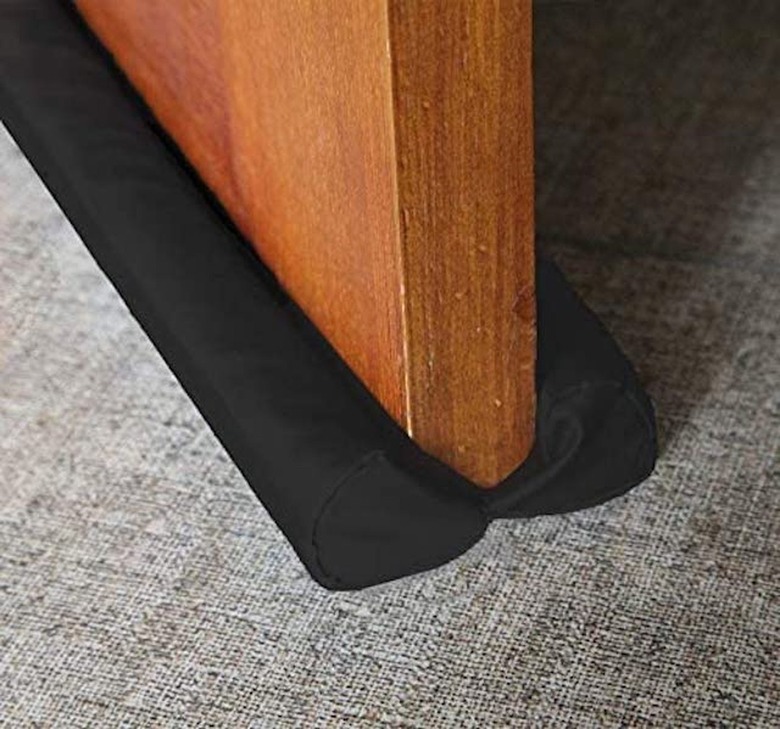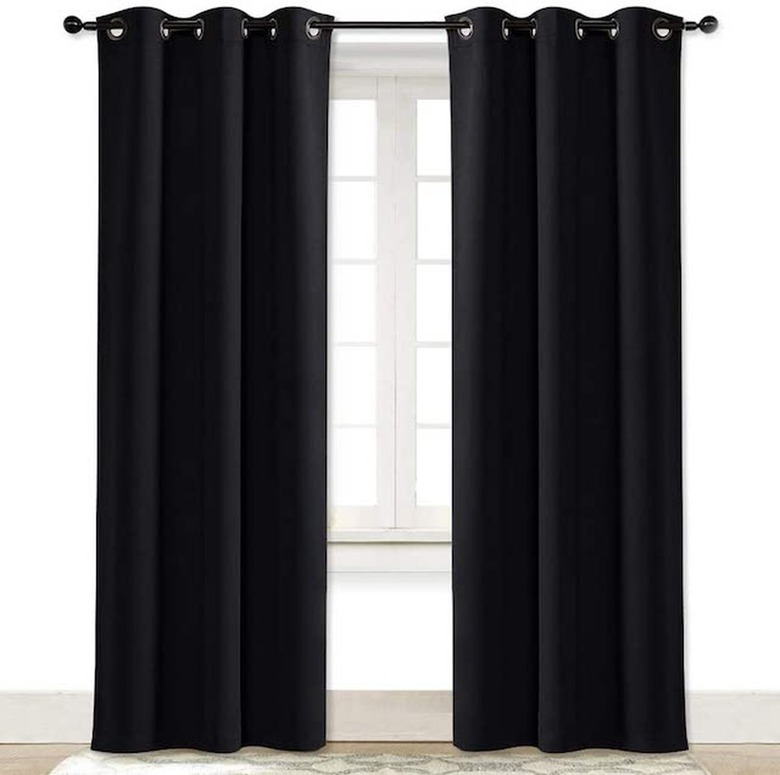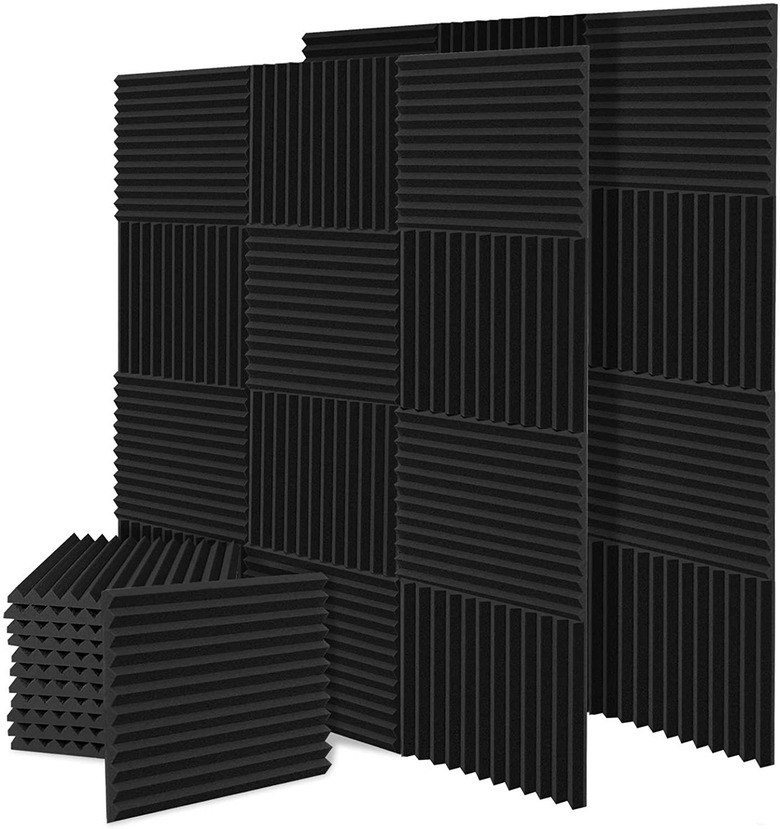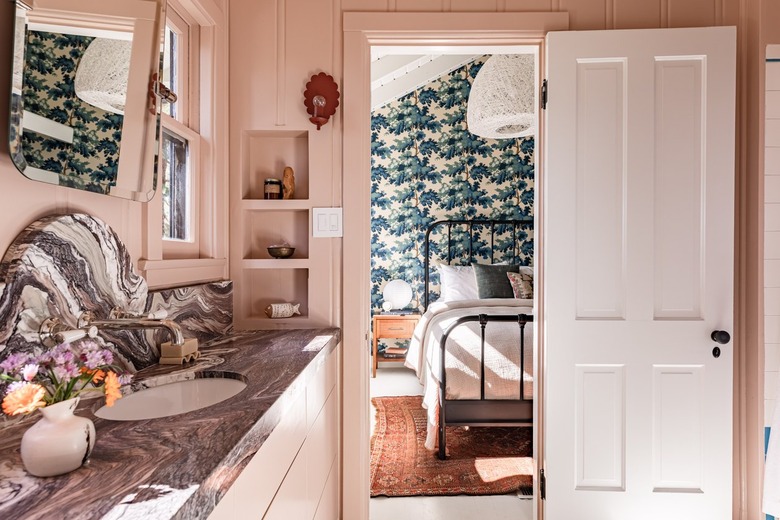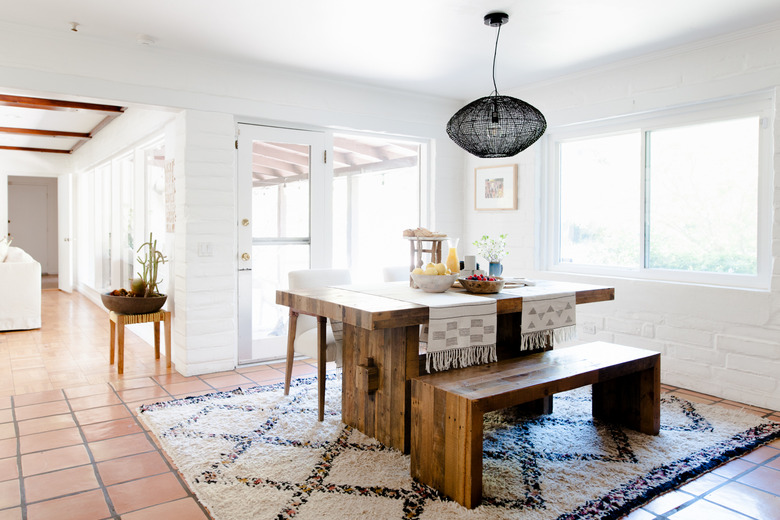How To Soundproof A Door — 7 Easy DIY Methods
We may receive a commission on purchases made from links.
Whether you work a night shift, have a new baby, or you're just a very light sleeper, soundproofing a door can help everyone in your household rest easier and longer. Though there are soundproofing pros that can add insulation or drywall to make things quieter in your room, there are easy (and less expensive) DIY ways to soundproof.
Air isn't very dense, so sound travels through it easily. A doorway is a pretty big opening, and sound waves will generally travel through readily. A closed door will help reduce outside noise, of course, but it may not be enough.
If your room seems particularly noisy, the problem could be the construction of the door itself or the gaps around the door that let in noise even when the door closes. Fortunately, there are several affordable ways to help make your door better at stopping unwanted sounds. Depending on how quiet you want things to get, you may need to use a few soundproofing techniques in conjunction with one another.
1. Try some soundproof paint.
1. Try some soundproof paint.
More precisely called sound-deadening paint, soundproof paint can provide a quick and easy solution to block sound, but it does have some limitations. Applied to your door like regular paint, soundproof paint tends to dry with a bit of a raised surface rather than staying perfectly smooth. This happens because the paint contains ceramic spheres that help provide a sound barrier. These create an absorptive, rough surface that helps prevent sounds from echoing. The texture typically isn't a problem if you're only using it on a door, but you probably don't want to paint an entire room with it.
This special paint does an excellent job of blocking midrange frequencies, like human speech. If you're looking for a way to have more private conversations, soundproof paint is an excellent solution. The paint doesn't do a good job of blocking high or low frequencies, however. Traffic noises and high-pitched instruments (like flutes) will come right through the paint.
2. Install some weatherstripping.
2. Install some weatherstripping.
No matter how solid or well-built your door, there is always a small air gap between the door and the frame when the door is closed. This gap can let it in a surprising amount of noise. One of the simplest and cheapest ways to solve this problem is to install weatherstripping. Not only will weatherstripping block noise but it will also stop drafts around both interior and exterior doors.
Installing adhesive weatherstripping is super easy. Simply peel the paper off the adhesive, stick the weatherstripping to the door frame, and cut it to the proper length. This will seal any gaps around the door and help block unwanted noises. Weatherstripping is available in different thicknesses so that you can seal the gaps without going too thick and making the door difficult to open and close.
If you want to take your soundproofing to the next level, consider purchasing a soundproofing door seal kit. These kits use rubber gaskets rather than weatherstripping to create a tight seal. They cost more than weatherstripping, but they also block quite a bit more sound. They're a bit harder to install but the product will come with a complete set of instructions.
3. Add a door sweep.
3. Add a door sweep.
Weatherstripping works well around a door, but the best way to seal the bottom of the door is with a door sweep. Mounted to the bottom of the door with adhesive or screws, a door sweep consists of a rubber blade, a fabric bumper, or a series of bristles that literally sweep against the floor as the door opens and closes (in some cases, the sweep doesn't touch the floor but completes a seal when it contacts the door threshold). When the door is closed, the sweep blocks air and noise from coming in under the door. Door sweeps are most often installed on exterior doors but can work fine on interior doors as well.
Tip
You can use a door sweep over carpet, but note that it can wear the carpet over time. To prevent this, choose an automatic door sweep. These handy devices automatically lift up when you open and close the door. When the door is closed, they slide back down into place for noise reduction.
4. Add soundproof curtains.
4. Add soundproof curtains.
This is an excellent solution for renters who likely aren't allowed to install permanent soundproofing devices. Although not always the most aesthetically pleasing option, soundproof curtains can provide good sound reduction without making any permanent changes to the door. Though there are soundproof blankets that block a lot of noise, soundproof curtains come in different colors and generally look better.
Ideally, you want to hang the curtains in such a way that there isn't a gap around them or between them and the door. To do so, attach Velcro to the door frame and the curtains so that they sit tight against the door. However, if a few gaps aren't crucial for your situation (and you understandably don't like the look), you can simply install a curtain rod over the top of the door and hang the curtain from grommets or clips.
5. Add acoustic panels.
5. Add acoustic panels.
Sold to help reduce the noise in home theaters, recording studios, and other spaces, foam acoustic panels do a good job of blocking noise. These panels attach via glue, tape, or nails, and you can put them on a door just as easily as you can on a wall. There is a caveat here, unfortunately. Acoustic panels do a pretty good job of keeping sounds in the room, so they work well if you are the noisy neighbor and want to try to quiet things down. They're not as good at keeping sound out, however, so they may not help you deal with a noisy neighbor.
If you want to improve the chances of acoustic panels working both ways, make sure they are dimpled, ribbed, or otherwise shared on both sides. Panels that are flat on one side are easier to mount, but they do a poor job of keeping outside noise at bay.
Warning
Foam acoustic panels do a good job of blocking noise, but they are flammable and create large amounts of smoke when ignited. Think twice before hanging them on a door in living spaces, especially if it is the door of a child's bedroom.
6. Install a solid-core door.
6. Install a solid-core door.
Quite often, hollow-core doors are used as interior doors to save weight and money. These doors have a foam or wooden frame inside to support the door, but the rest of the door's interior is hollow. Solid-core doors, on the other hand, are made of solid wood from front to back. These doors provide better insulation and block a lot more noise than hollow-core doors. Because they can be expensive, however, solid-core doors are often reserved for use as exterior doors.
Door material and design can have an impact on both price and soundproofing ability. On average, however, you can expect to pay $30 to $240 for a hollow-core interior door and $60 to $330 for a solid-core interior door. But this price difference is well worth the investment if you are considering replacing your existing door. Hanging a solid-core door is the simplest and most effective way to block noises, and you'll have a high-quality door that will last for years.
If you like the idea of a more solid door but solid wood is a bit out of your price range, consider purchasing an insulated steel door. Filled with insulating foam, these doors can offer similar sound protection but cost a bit less.
7. Soundproof the adjacent room.
7. Soundproof the adjacent room.
This technically doesn't involve a door, but soundproofing the room next door can help a lot. If, for example, your bedroom door opens to a tiled living room, try making that room quieter. Hard surfaces bounce noise back into the room, while soft surfaces absorb it. Adding an area rug, plush furniture, curtains, and other sound absorbers can make the space quieter. The less noise that is bouncing around that room, the less noise there will be to creep in through your door.
